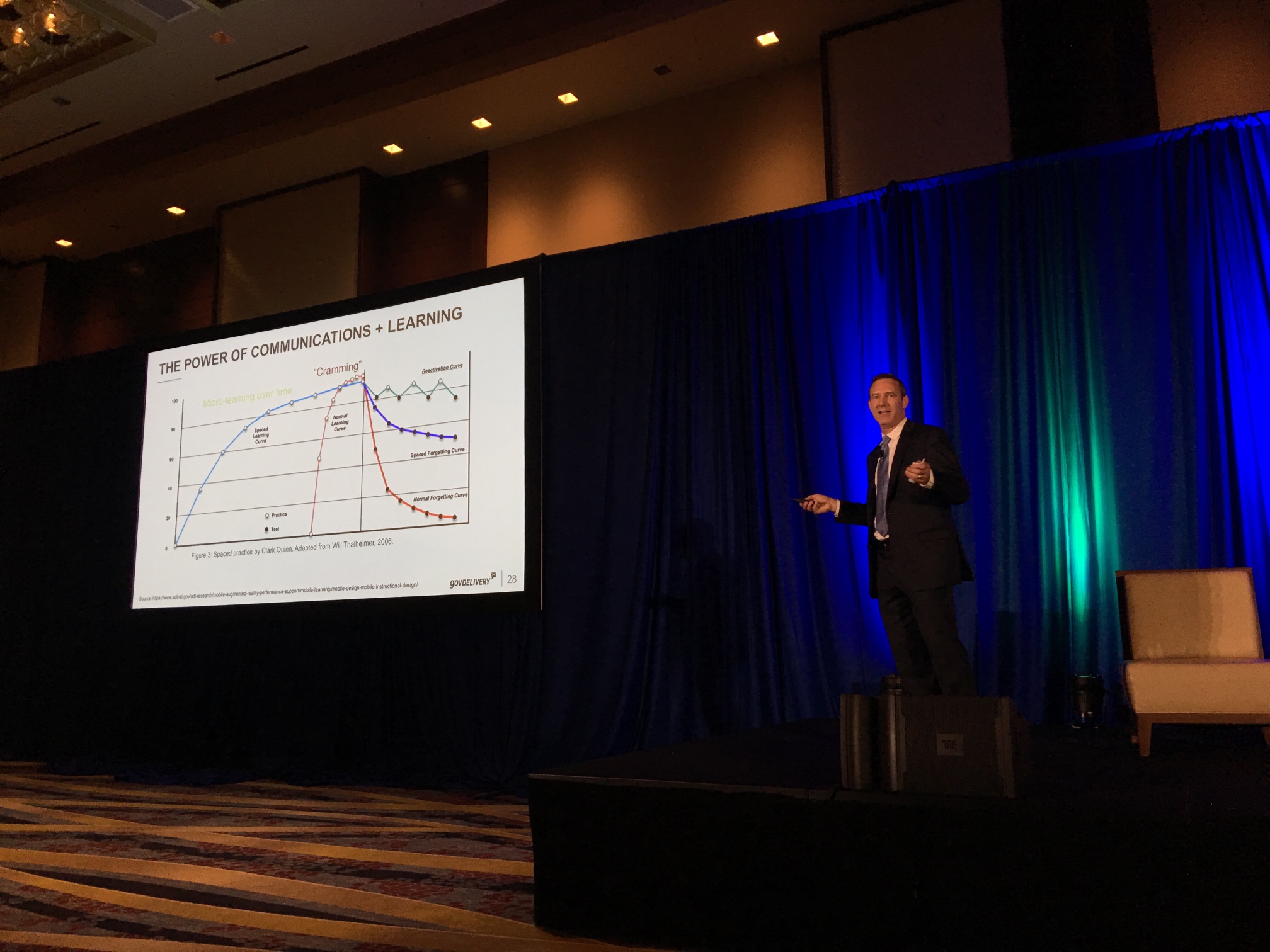Online learning is relatively new. But we all know that learning — and government’s involvement in educating citizens — is not. In fact, throughout our nation’s history, powerful ideas have been conveyed in short, memorable phrases. Even before 140 characters on Twitter, 6-second videos on Vine or the LOLs we get from GIFs, people were saying sticky things – and having powerful results. (Anybody remember “Only you can prevent forest fires,” or “Don’t drink and drive”?)
Andrew Krzmarzick, Vice President, Learning and Development at GovDelivery, delved into this fact at GovDelivery’s 9th Annual Digital Communications Summit. “Yet because we live in an era of YouTube and Facebook and Snapchat, the approaches that you’re hearing about today require us to adapt the way we educate our citizens and other key stakeholders,” he explained. “As a learning professional, I think about communications from the perspective of ‘how do we teach people something that sticks and compels them to action?’”
Krzmarzick suggested that government communication and training professionals should be spending a lot more time together so they can continue to have powerful results in improving the citizen experience and moving them to action. Luckily, there are three current and actionable learning trends that digital communicators can take advantage of to get their messages to more citizens.
Trend #1: Micro and mobile learning
Micro learning refers to a very brief “hyper learning” moment. The average length of a micro lesson is 5-10 minutes long — something easy for people to commit to. Krzmarzick referred to the trend of micro learning as “Goldilocks information” — providing citizens the information they need to learn that’s the right information, the right amount, the right type, and to the right people. It’s important to have your learning information available on multiple platforms, including mobile. “Micro learning is more than just telling people something,” Krzmarzick said. “It’s showing them how to do it, and giving them information that can orient them towards action.”
Trend #2: Interactive text messaging for learning purposes
If you’re not taking advantage of SMS and texting to drive action, learning, and reminders for your educational content, you’re missing out, Krzmarzick said. Use texting platforms to create mobile learning prompts; to survey your class audience, to allow a course taker to provide real-time feedback, or to send reminders and notifications about online courses.
Trend 3: Multi-channel communications for your learning
This trend is all about myth-busting the idea of “If you build it, they will come.” The hard truth, Krzmarzick said, is that even if you build the best online learning course the world has ever seen, that doesn’t mean anybody will take it or show up to the training. You have to adapt the learning you want to give to the ways in which your audience wants to learn and receive it. What are their preferences for receiving information? Some may want it over email; some may want it via a text; some may not actually want what you’re serving up at all (but they could be interested in a different topic).
Taking in all these trends can be overwhelming, and your organization may not be able to take advantage or implement each of them right away. But Krzmarzick said if you can just take one trend and try to apply it to your learning and training efforts today, you’ll see a difference sooner than you expect.
You can see slides from Krzmarzick’s presentations here. For a real-world example of how some of these trends were applied to a new learning environment, visit this post: How the Federal Highway Administration Flipped Its Learning Model. Want to learn more about the online learning services GovDelivery offers? Head here. And check out all that the GovDelivery Digital Communications Summit, “Transforming the Citizen Experience,” had to offer here.





Leave a Reply
You must be logged in to post a comment.